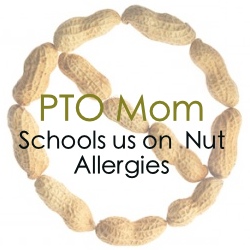Providing the proper accommodations for your child when they are at school can be quite frustrating. What you find to be completely reasonable, others (who do not have to go through the food allergy life) think is completely unreasonable. School staff tend to think a parent is overreacting most of the time; thinking we just want to put our child in a tiny little bubble and treat him like he is a porcelain doll. In reality, we are just trying to lower their chances of having a life changing allergic reaction.
Here are a few reasonable accommodations that school staff should NOT fight you on:
- All school staff is to be trained to use the epi pen. (This includes cafeteria staff, teachers and office personnel)
- Teachers will not use the allergen in classroom projects, behavior rewards or lesson plans.
- *Student is permitted to carry epi pen. An additional epi pen will be kept in the main office.
- **Student can sit with everyone else at lunch time, with cafeteria staff being informed of the allergy to avoid it going near student.
- Notices will be sent home to classmates encouraging non-food celebrations (birthdays, holidays etc.) OR to inform them there is an allergic student and remind them of the foods that are NOT safe to bring in.
* If the student is allowed to self carry in the school district and if the parents feel comfortable with it.
** Ultimately up to the parents on the cafeteria conditions.
Here are a few negotiable accommodations that school staff and parents will need to find an agreement on:
- allowing the child to have a safe snack bag in the classroom (most likely provided by parents)
- notices sent home to the entire school notifying them of the allergy.
- nut-free classroom
- peanut-free zone at lunch time
You are the parent so you decide what is needed so your child can have a great educational experience and, most importantly, a safe experience at school.
If you have any questions about reasonable accommodations for your child, set up a meeting with the school’s principal and/or social worker. They can help you decide on what is absolutely needed. Remember to never let the school talk you out of an accommodation that you know your child needs.
Have a question regarding Peanut, Tree Nut or Other food allergies in school? Want to suggest a topic for me to discuss? Follow Me on Facebook @ www.facebook.com/ptomom or Contact me @ pto_mom@aol.com and follow my Inspiredeats column here.
Get “Schooled” on Food Allergies With PTO Mom!
*All information on this page is not to be taken instead of medical advice.*

